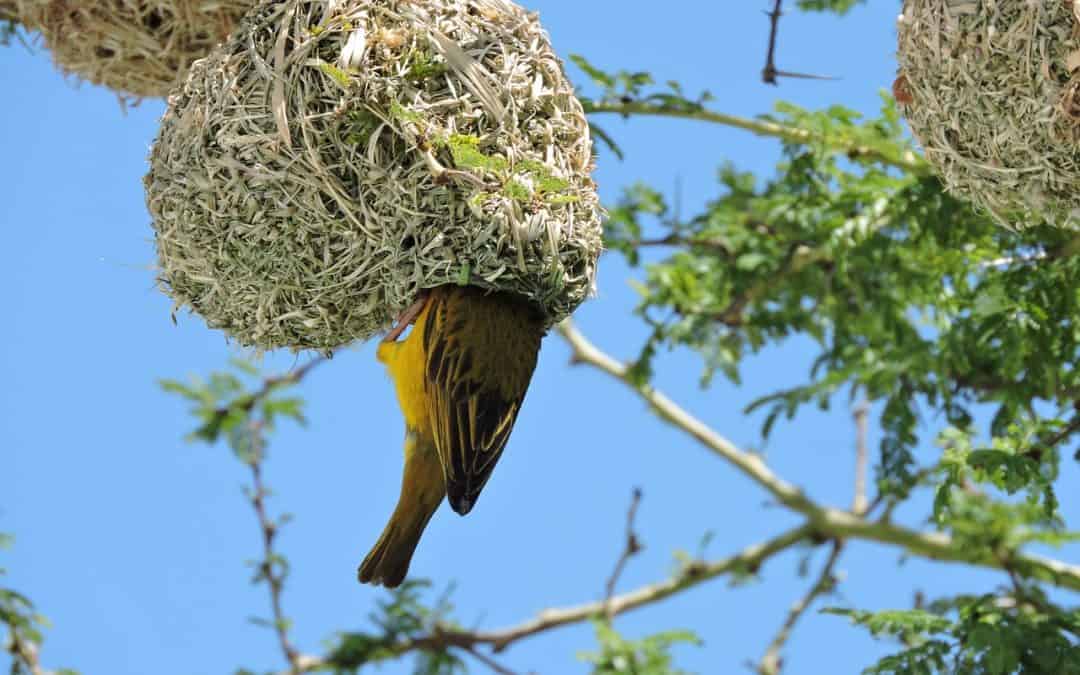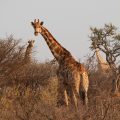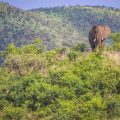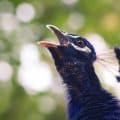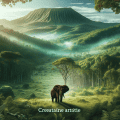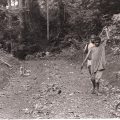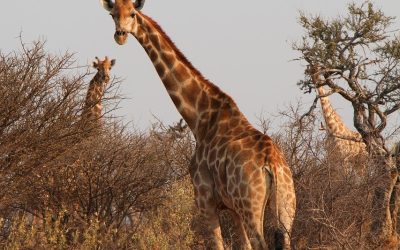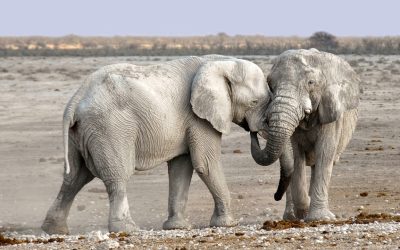So you’re looking to experience the thrill of hunting in one of Africa’s most renowned national parks? Look no further than Matusadona National Park. Nestled on the shores of Lake Kariba, this pristine wilderness is a haven for wildlife enthusiasts and thrill-seekers alike. With its vast expanses of untamed wilderness and abundant game species, Matusadona offers a unique hunting experience that will leave you in awe. Whether you’re a seasoned hunter or a novice, this article will provide you with all the essential information you need to embark on an unforgettable hunting adventure in Matusadona National Park.
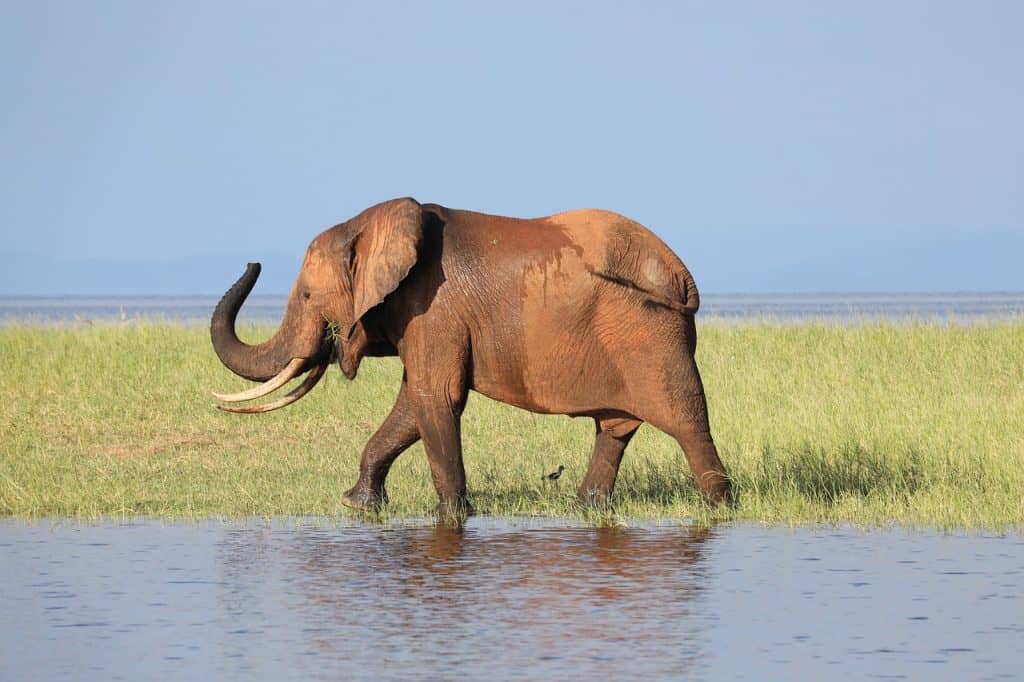
Overview of Matusadona National Park
Matusadona National Park is a protected area located in northern Zimbabwe. Covering an expanse of approximately 1,400 square kilometers, the park is situated on the shores of Lake Kariba and encompasses a diverse range of habitats, including savannah grasslands, rugged mountains, and lush forests.
Location and size
Matusadona National Park is bordered by Lake Kariba to the north, the Sanyati River to the south, and the Ume River to the west. It is located in the Mashonaland West Province of Zimbabwe, approximately 350 kilometers northwest of the capital city, Harare.
Ecological importance
The park is of significant ecological importance, as it provides a haven for a wide variety of plant and animal species. Matusadona National Park is renowned for its thriving populations of large mammals, including elephants, buffalos, and lions. The park also supports a rich birdlife, with over 240 different species having been recorded within its boundaries. The diverse ecosystems found within Matusadona National Park contribute to the overall biodiversity of the region and serve as a crucial ecological corridor for wildlife movement.
Wildlife conservation efforts
Matusadona National Park plays a vital role in wildlife conservation efforts in Zimbabwe. The park is actively involved in anti-poaching initiatives, with trained rangers patrolling the area to safeguard against illegal hunting activities. In addition, various research programs are being conducted within the park to monitor and study the wildlife populations, ensuring the implementation of effective conservation strategies. These efforts aim to maintain the delicate balance of the ecosystem and protect the park’s unique biodiversity for future generations.
Hunting Regulations and Guidelines
Before embarking on a hunting expedition in Matusadona National Park, it is essential to familiarize yourself with the relevant regulations and guidelines that govern hunting activities within the park.
Legal requirements
To hunt legally in Matusadona National Park, hunters must comply with the laws and regulations set forth by the Zimbabwe Parks and Wildlife Management Authority (Zimparks). It is necessary to obtain the appropriate hunting licenses and permits, as well as adhere to specific hunting seasons and restrictions.
Permits and licenses
Hunters in Matusadona National Park are required to obtain a valid hunting permit and license issued by Zimparks. These permits outline the specific game species that can be hunted, as well as the quotas and duration of the hunting season. It is important to ensure that all permits and licenses are up-to-date and in compliance with Zimparks’ regulations.
Restricted hunting areas
Certain regions within Matusadona National Park may be designated as restricted hunting areas, where hunting activities are prohibited or limited. These restricted areas are typically set aside to protect vulnerable or endangered wildlife populations or sensitive ecological sites. It is crucial for hunters to respect these restrictions and avoid hunting in prohibited areas to promote sustainable conservation practices.
Types of Hunting in Matusadona National Park
Matusadona National Park offers a range of hunting opportunities for enthusiasts seeking different experiences and game species.
Big game hunting
Big game hunting in Matusadona National Park refers to the pursuit of large and iconic African game species, such as elephants, buffalos, and lions. This type of hunting requires careful planning, specialized equipment, and experienced guides to ensure the safety and success of the expedition.
Trophy hunting
Trophy hunting involves hunting specifically for the purpose of obtaining a trophy, typically a highly sought-after animal species. In Matusadona National Park, hunters can pursue trophies such as kudu, sable antelope, or leopard, among others. To participate in trophy hunting, hunters must comply with the regulations and obtain the necessary permits.
Sport hunting
Sport hunting, also known as recreational hunting, focuses on the enjoyment and challenge of the hunt itself, rather than acquiring trophies or specific game species. This form of hunting allows hunters to engage in the thrill of the chase and test their skills without the expectation of securing a trophy or harvesting game.
Hunting Seasons and Availability
It is important for hunters in Matusadona National Park to be aware of the seasonal restrictions and optimal times for hunting specific game species.
Seasonal restrictions
Matusadona National Park has designated hunting seasons for various game species. These seasons are implemented to ensure sustainable hunting practices and avoid undue pressure on wildlife populations during sensitive periods, such as breeding or migration seasons. Hunters must adhere to these seasonal restrictions to maintain the ecological balance of the park.
Best time for specific game
The availability and behavior of game species in Matusadona National Park vary throughout the year. Researching the best time to hunt specific game can enhance the success of hunting trips. For example, the dry winter months may be ideal for hunting buffalo, as they gather around water sources, while the wetter months may present opportunities to track elusive leopard.
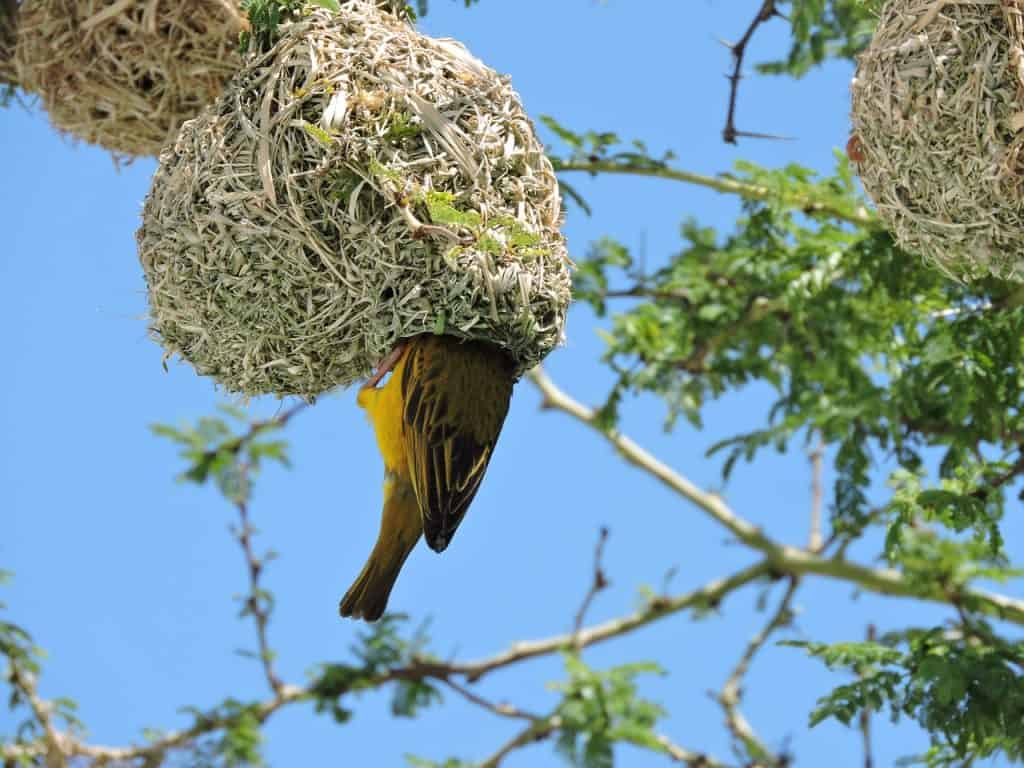
Preparation for a Hunting Trip
Preparing for a hunting trip in Matusadona National Park involves several key considerations to ensure a safe and successful experience.
Researching hunting outfitters
Engaging the services of an experienced and reputable hunting outfitter can greatly enhance your hunting experience in Matusadona National Park. Conduct thorough research to find a licensed outfitter who can provide expert guidance, arrange necessary permits, and offer logistical support for your hunting expedition.
Fitness and wilderness skills
Hunting in Matusadona National Park can be physically demanding, requiring a level of fitness and wilderness skills to navigate the rugged terrain and potentially encounter challenging weather conditions. Prioritize physical conditioning and acquire essential wilderness skills, such as map reading, navigation, and first aid, to ensure your safety and enjoyment during the hunt.
Gearing up
Investing in appropriate hunting gear is essential for a successful trip in Matusadona National Park. Essential equipment may include firearms, ammunition, hunting optics, clothing suitable for varying weather conditions, camping gear, and essential survival tools. Consult with hunting outfitters or experienced hunters to determine the specific gear required for your chosen hunting activities.
Ethical Considerations in Hunting
Hunting in Matusadona National Park should always be approached with ethical considerations in mind to promote responsible and sustainable practices.
Fair chase principles
Fair chase principles dictate that hunters should pursue game in a manner that allows the animal a reasonable chance to escape and exercise its natural instincts. This includes the adherence to hunting regulations, avoiding unethical practices such as luring animals with bait, and ensuring that the animal is harvested swiftly and humanely to minimize suffering.
Respect for wildlife and environment
Maintaining respect for wildlife and the natural environment is crucial in hunting. Hunters in Matusadona National Park should strive to minimize their impact on the ecosystem, leaving no trace and respecting the park’s biodiversity. Respecting wildlife also encompasses understanding the habits and behaviors of the animals being hunted, as well as appreciating their role within the ecosystem.
Conservation-minded hunting practices
Conservation-minded hunting practices involve actively contributing to wildlife conservation and habitat preservation efforts. Hunters can support these initiatives by participating in sustainable hunting programs, adhering to hunting quotas, and contributing financially to conservation organizations. By practicing responsible hunting, hunters can help ensure the long-term survival of the park’s wildlife populations.
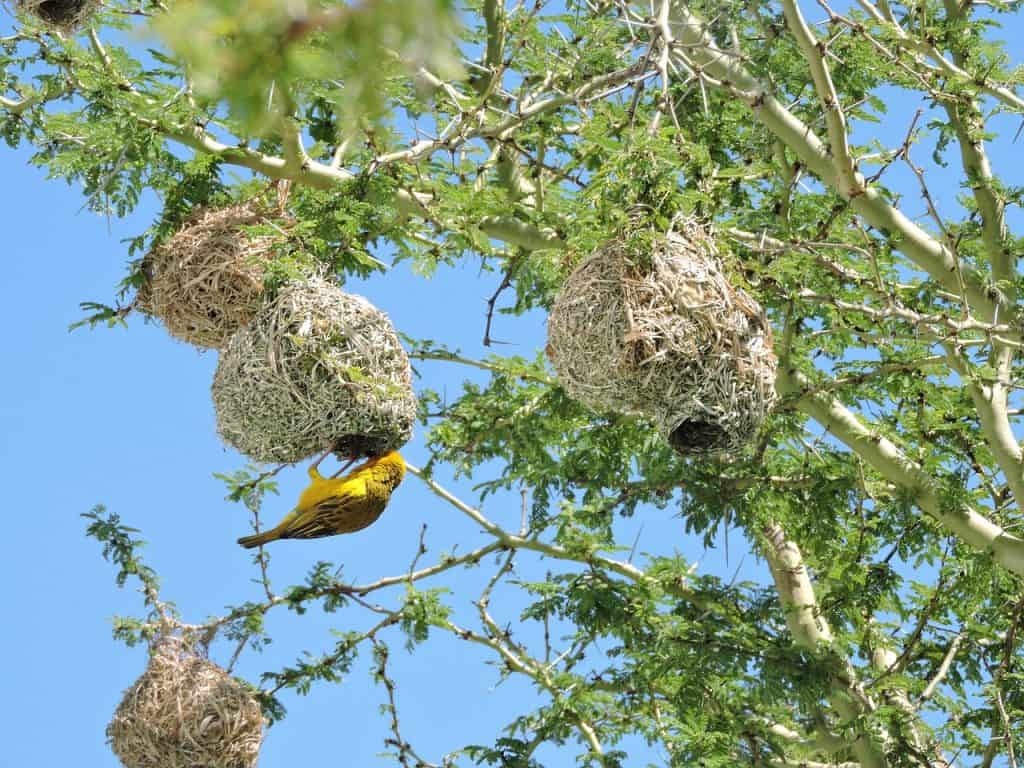
Challenges and Risks of Hunting in Matusadona National Park
Hunting in Matusadona National Park presents several challenges and risks that hunters should be aware of to ensure their safety and the preservation of the park’s ecosystem.
Terrain and weather challenges
Matusadona National Park’s rugged terrain, characterized by steep slopes, thick vegetation, and rocky outcrops, can pose challenges for hunters. Navigating through these terrains requires physical fitness, proper equipment, and careful planning. Additionally, the weather can be unpredictable, with temperatures fluctuating and rainfall patterns varying throughout the year, further adding to the challenges faced by hunters.
Encounters with dangerous wildlife
Matusadona National Park is home to a variety of dangerous wildlife species, including elephants, hippos, and crocodiles. Hunters must exercise caution and be prepared for potential encounters with these animals. Understanding their behavior and following safety protocols, such as maintaining a safe distance and avoiding any confrontations, is crucial to minimizing the risk of harm.
Legal and ethical risks
Engaging in illegal hunting activities within Matusadona National Park poses significant legal and ethical risks. Violating hunting regulations, such as hunting without the required permits or targeting protected species, can result in severe penalties, including fines and imprisonment. It is essential for hunters to familiarize themselves with the rules and regulations to avoid legal repercussions and to contribute to the ethical and sustainable hunting practices within the park.
Benefits and Contributions of Hunting to Matusadona National Park
Despite the challenges and risks, hunting can provide significant benefits and contribute to the overall well-being of Matusadona National Park.
Economic impact
Hunting activities in Matusadona National Park generate economic benefits for local communities and contribute to the region’s tourism industry. Revenue derived from hunting permits, licenses, and associated services supports the livelihoods of local residents, providing incentives for them to participate in conservation efforts and protect the park’s natural resources.
Funding conservation efforts
Hunting fees often contribute to funding conservation projects within Matusadona National Park. These funds are utilized for anti-poaching initiatives, wildlife research, habitat restoration, and community development programs. By participating in hunting activities, hunters can directly contribute to the conservation and management of the park’s ecosystem.
Population control
Hunting provides an essential tool for managing wildlife populations in Matusadona National Park. By selectively targeting specific game species and adhering to sustainable hunting quotas, hunters can contribute to population control efforts. This helps maintain a balanced ecosystem and reduces the potential for overpopulation, which can lead to resource depletion and impact the well-being of other wildlife species.
Alternative Activities in Matusadona National Park
For those seeking alternative experiences within Matusadona National Park, there are various non-hunting activities available that still provide opportunities to witness and appreciate the park’s remarkable wildlife and natural beauty.
Photographic safaris
Photographic safaris allow visitors to capture unforgettable moments and stunning images of Matusadona National Park’s wildlife and landscapes. Accompanied by experienced guides, participants can explore the park’s diverse habitats and have up-close encounters with a wide range of animals, all while practicing responsible wildlife viewing.
Walking safaris
Walking safaris offer a more immersive and intimate experience of Matusadona National Park. Led by knowledgeable guides, participants can explore the park on foot, observing wildlife from a closer perspective while learning about the diverse flora and fauna. Walking safaris provide a unique opportunity to connect with nature and gain a deeper understanding of the park’s ecological importance.
Fishing trips
Lake Kariba, which borders Matusadona National Park, is renowned for its abundant fish populations, presenting excellent opportunities for fishing enthusiasts. Guided fishing trips can be arranged within the park, allowing visitors to try their hand at catching trophy-sized tigerfish or other freshwater species. Fishing in this pristine environment provides a tranquil and rewarding experience for nature lovers.
Conclusion
Matusadona National Park offers a unique and diverse range of hunting opportunities, allowing enthusiasts to experience the thrill of the chase and connect with nature in a spectacular setting. However, it is crucial to approach hunting in Matusadona National Park with a deep understanding and respect for the park’s conservation efforts and wildlife populations. By practicing ethical hunting, contributing to the park’s sustainable management, and exploring alternative activities, visitors can leave a positive impact while creating unforgettable memories and experiences in this remarkable African wilderness.

